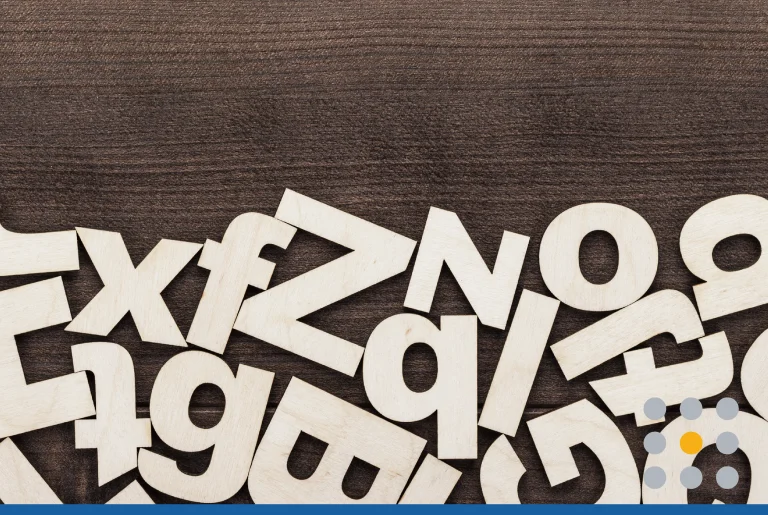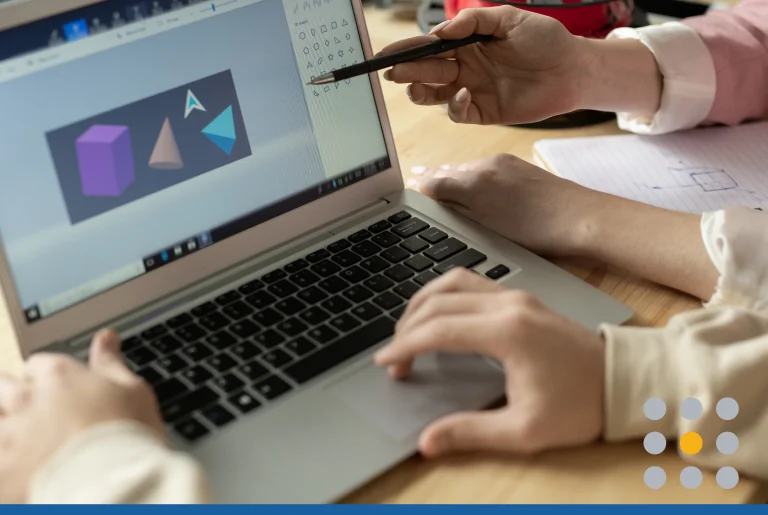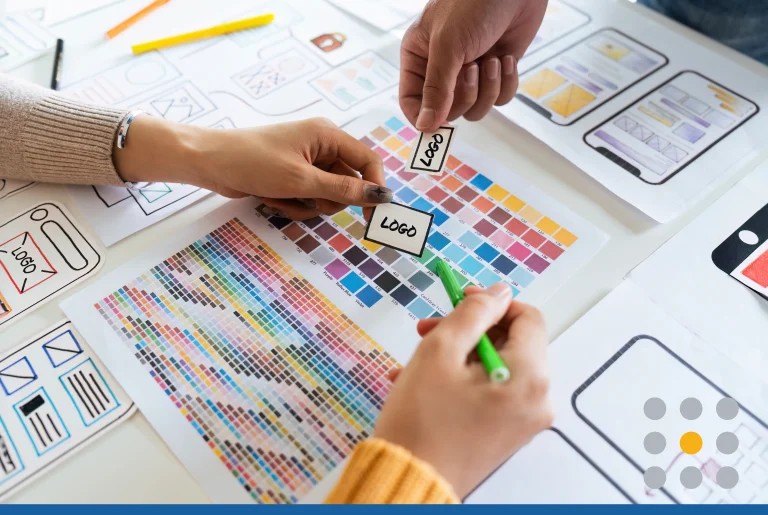In a lot of ways, branding is one giant optical illusion. Good branding looks simple on the surface, but it’s really the product of exhaustive research and design.
Think of all the behind-the-scenes effort you put into making a great customer experience. All the details customers don’t see are the real meat of branding building. Yet, most of your hard work boils down to a handful of front-end touchpoints. Fortunately, you can leverage the gaps in experience to increase loyalty.
Boost brand visibility with a logo
Start by designing a brand logo for your business. When you provide a visual mark for customers to focus on, it acts as an emotional trigger. Customers don’t have to see all the bells and whistles to know what makes your small business special. Deliver positive experiences, and the meaning of your brand is reinforced every time a customer sees your logo.
So what steps should you take to make an effective logo design?
- Get an accurate picture of how customers perceive your business.
- Tell a visual story that mirrors the customer experience you offer.
- Incorporate a creative point of interest for impact.
- Aim for visual balance in shape, color, and action.
- Put the logo’s recognition value to the test.
Let’s look at these points in closer detail.
Understand customer perceptions
What you want to project and what others see isn’t always the same. If you struggle to come up with good logo ideas, it might be because you’re emphasizing the wrong things. Do yourself a favor, and stop guessing.
Find out exactly what loyal customers love about your business. While this isn’t possible for a new venture, you can still present your brand concept to potential customers. Ask them to write a few words to describe your messaging, compare to a provided list of competitors.
Do your customers agree on what your business stands for? Do their perceptions match up with your intended message?
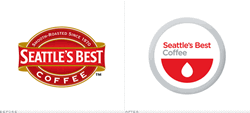
Consider the 2010 rebranding of Seattle’s Best Coffee. For years, the company had a red and gold emblem-style logo with a banner encircling an oval. The company changed to a red half-circle containing a white drop. The new design was sleek and modern, but there was one big problem. The sterile look combined with the shapes and colors instantly reminded customers of a blood drive. Obviously, that’s not the connotation you want for a beverage company.
A brand logo is part of your business story, but it exists to serve the customers — not you. If you don’t consider their opinions, you can easily invest money in an embarrassing design.
Deliver a precise visual story
Merge your brand goals with the insight you gain from customers. The words they use to describe your brand should help you choose fonts, symbols, and colors. Imagine the type of story you would tell about an eco-friendly construction business.
What’s the color story? Green is an obvious place to start because the business involves creation, nature, and environmental safety. Gray and blue are common corporate colors that can complement a traditional, grounded business.
Now, how about fonts and shapes? Most people associate contractors with strength, stability, and precision. Clean geometric designs and bold fonts work well to convey a sense of durability and integrity.
Take industry standards and trends into account as you make design choices. The goal isn’t to be like everyone else, but to avoid inherent conflicts in brand messaging.
Showcase a point of interest
The majority of logos aren’t good or bad. They’re just plain boring. The truth is you’re better off with no logo than a design so generic you forget it in five seconds. So focus on how to take a design from obvious to interesting. Incredibly small touches can add deep meaning and action to an otherwise simple logo.

And keep in mind, boring isn’t the same as minimalism. Beats by Dre and IBM both offer simple, but effective logo design examples. The Beats logo is a red circle with a letter “b” inside. For added impact, the letter resembles a profile view of a person wearing headphones. It’s a clean, smart, and simple way to represent the experience of listening to music.

IBM’s striped wordmark is meant to represent speed and dynamic change. The logo employs a common optical illusion to create the appearance of movement. The end result? The bold serif font and striping remind you IBM is a long-standing company with a forward-looking mindset.
As you look at your logo sketches, reflect on traits that make you stand out from competitors. How can you weave in one or two subtle details to illustrate that point of difference?
Preserve the visual balance
Before you create a logo, accept the fact that you aren’t going to become a design guru overnight. Working with designers or a logo maker can help you produce a polished design. Yet, it’s worthwhile to brainstorm and sketch thorough ideas, whether you go it alone or not.
Take time to learn some principles of design. Better yet, look to big brands for effective logo design examples. Color and geometry play a big part in visual impact. You can prevent a lot of bad starts just by seeing what does and doesn’t work. One thing you’ll realize right away is most logos have a natural symmetry.
Focusing on balance helps logo designers spot elements that stand out for the wrong reasons. So make the design process easier on yourself, and start with very basic, symmetrical shapes. If you add something to one side of the design, make sure the other side doesn’t look overpowered.
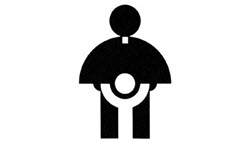
As your designs develop, pay attention to how shapes interact. A lot of logo disasters occur when designers don’t see the secondary action in the image. The infamous 1970s Catholic Church Youth Commission logo has been a source of ridicule for years.
Test the recognition value
At the end of the day, customers are the real judges of an effective logo design. Before you move forward with a big branding effort, always test your logo. At this point, you’re attached to the design and not the best person to critique it.
Get unbiased feedback from people who have different levels of familiarity with your brand. Provide a few details about your positioning to give the logo context. With minimal information, customers should be able to guess what your logo represents.
Back up your logo with consistent branding
As you delve into design, remember a logo isn’t a magic ingredient that can transform your business. The power of a logo comes from the brand itself. Building a strong customer base is the most effective way to grow your business. The logo is just a mascot to tie together your brand values and make it easy to engage with customers in key marketing channels.
Need more ideas? Browse through thousands of logo designs in our logo maker.
